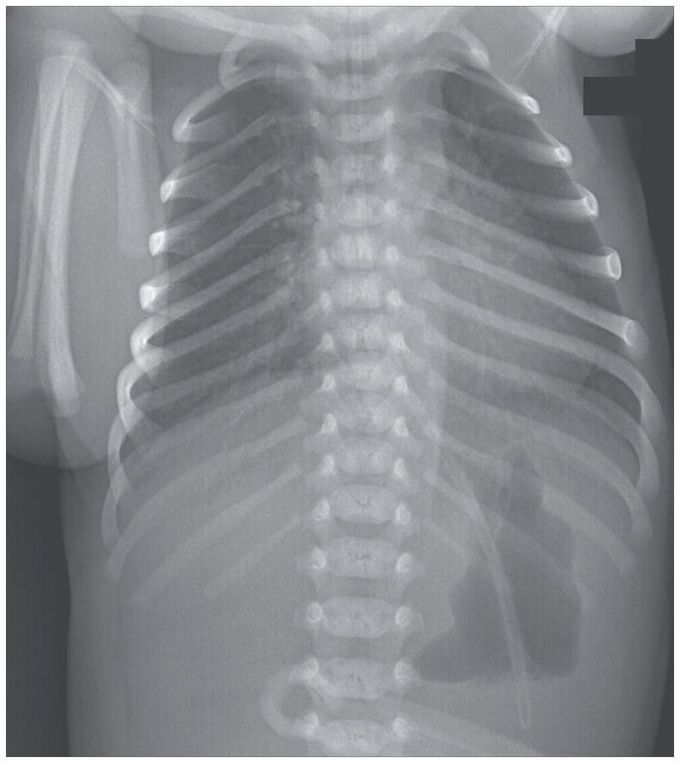


Single Bubble — Pyloric Atresia
The day after he was born, an infant boy was observed to have nonbilious vomiting, choking after feeding, and abdominal distention with no meconium. The infant had been born at a gestational age of 35 weeks after the spontaneous premature rupture of membranes and had weighed 2900 g at birth. Physical examination at the time of birth had revealed no birth defects, and breast-feeding had commenced 6 hours after birth, in small amounts. Radiography of the abdomen while the patient was in the upright position revealed a single “bubble,” representing a dilated stomach with a fluid level, suggestive of congenital pyloric atresia, with a paucity of air distal to the stomach. A single bubble indicates congenital pyloric atresia, as compared with a double bubble, which indicates duodenal atresia. Congenital pyloric atresia is a rare condition and can be associated with other anomalies, such as epidermolysis bullosa, multiple intestinal atresia, esophageal atresia, Down’s syndrome, and congenital heart disease. Laparotomy and gastrotomy revealed a prepyloric membrane (congenital pyloric atresia type 1), which was excised, and parenteral nutrition was given for 5 days. The postoperative period was uneventful, with a good outcome during 2 years of follow-up.

